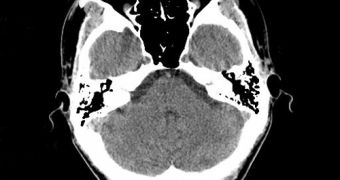A team of Japanese scientists have carried out a recent study that found a connection between a certain type of cellular stress and brain damage, which is associated with neurodegenerative disease.
Dr. Katsuhiko Mikoshiba, from the Laboratory for Developmental Neurobiology at RIKEN Brain Science Institute and senior author on the study, along with his colleagues, proved that a neuronal protein called inositol 1,4,5-trisphosphate receptor 1 (IP3R1) that supervises cellular calcium signaling was destroyed by endoplasmic reticulum (ER) stress and, as a consequence, induced neuronal cell death and brain damage.
Moreover, the researchers found that a protective "chaperone" protein called GRP78, positively governed IP3R1 and that ER stress led to a defective IP3R1-GRP78 interaction, and this has also been observed in an animal model of Huntington's disease (HD).
Body cells undergo environmental stress on a daily basis, and even if they do possess natural defenses, if the stress gets too much, it can lead the cells to a type of programmed death called apoptosis.
“It is thought that excessive stress impacts brain function by inducing neuronal apoptosis and may play a role in neurodegenerative diseases such as Alzheimer's disease and Huntington's disease (HD),” explained Dr. Mikoshiba.
“Based on our observation that the functional interaction between IP3R1 and GRP78 is impaired during ER stress and in the HD model, we propose that IP3R1 functions to protect the brain against stress and that the linkage between ER stress, IP3/calcium signaling, and neuronal cell death are associated with neurodegenerative disease,” he added.
Huntington's disease is also linked with abnormal calcium signaling and the stock of misfolded proteins.
Normally, the intracellular calcium signaling is regulated by the endoplasmic reticulum, which also controls the 'quality' of the proteins, but when the ER function is altered, it favors HD pathogenesis.
This research is the first one to make the connection between the reduction of calcium signal and cell death, and it was published by Cell Press in the December 9 issue of the journal Neuron.

 14 DAY TRIAL //
14 DAY TRIAL //